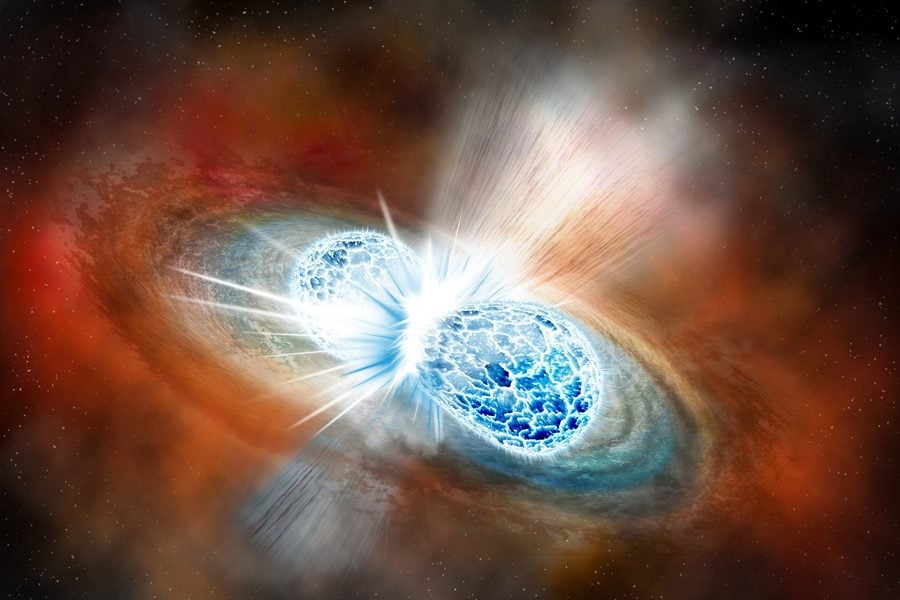Four NU astronomers among the first to detect neutron star collision
Source: Robin Dienel/Carnegie Institution for Science
An artist’s rendition of the collision and explosion of two neutron stars. Four Northwestern astronomers are members of the LIGO Scientific Collaboration, which discovered the collision on Aug. 17.
October 18, 2017
Four Northwestern astronomers were among the first to detect a collision of two neutron stars 130 million light-years from Earth, resulting in the type of explosion that produces heavy metals like gold and silver, according to a Monday news release.
The astronomers — physics and astronomy Profs. Vicky Kalogera, Shane Larson and Raffaella Margutti, and post-doctoral fellow Wen-Fai Fong — are members of the LIGO Scientific Collaboration, a group of international scientists dedicated to detecting gravitational waves. The LIGO Scientific Collaboration and another group, Virgo Collaboration, identified the collision on Aug. 17.
The LIGO Observatories discovered the first indication of the gravitational waves two years earlier, the release said. Neutron stars are formed when large stars explode in supernova and they are the smallest, densest stars known to exist.
As the neutron stars spiraled toward each other, they radiated gravitational waves that could be detected on Earth for about 100 seconds, the release said. When the stars collided, they emitted a flash of light in the form of gamma rays that was seen on Earth for about two seconds. The two types of waves — gravitational and electromagnetic — each contribute important information to the collision.
Kalogera, the leading astrophysicist on the LIGO Scientific Collaboration, said in the release this explosion has been predicted for many decades, but this is the first “multi-messenger” discovery.
“This combination of light and gravitational waves is brand new and very exciting — we’ve never had this kind of observation before,” Kalogera said.
Three detectors — two in the U.S. and one in Italy — observed the gravitational-wave signals when they first occurred, Kalogera said. She added this allowed the LIGO Scientific Collaboration to alert other colleagues studying gravitational wave astronomy.
Kalogera said this is only the beginning for the field of gravitational wave astronomy and there are more questions to answer.
“One might say, ‘Okay, you’ve done your job, now let’s go home,’” Kalogera said. “But in reality, this is just the beginning for us. The more sources like this we detect, the more we can learn.”
Email: elizabethbyrne2020@u.northwestern.edu
Twitter: @lizbyrne33



